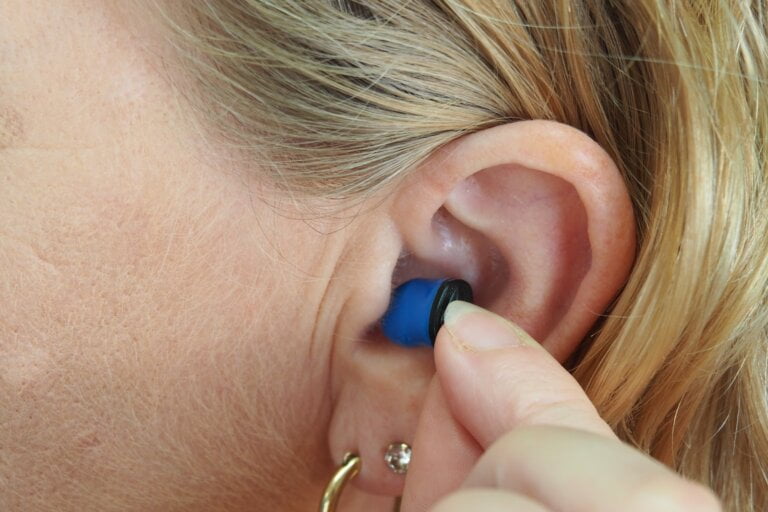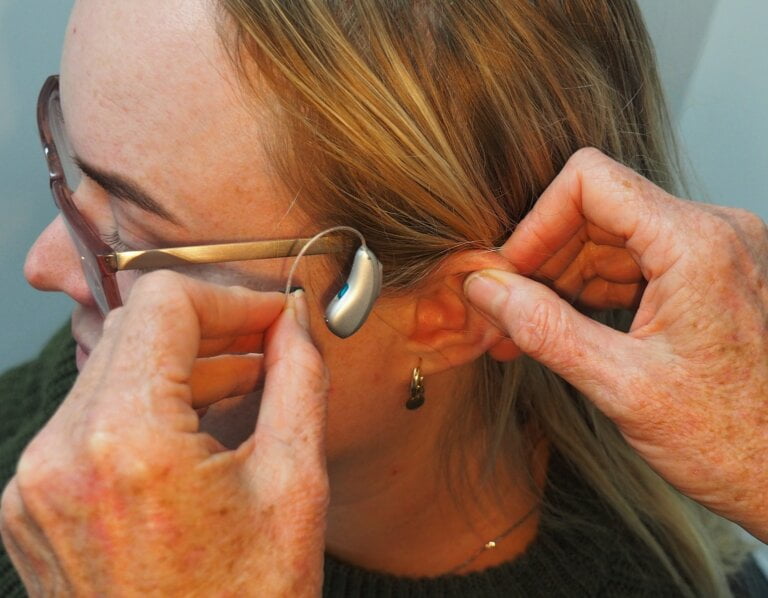Start Your Journey: A Guide to Beginner Courses in Microsuction
Last Updated on 3rd May 2024 by Admin
Microsuction is a specialized procedure used to remove excess wax and debris from the ear canal. It is a safe and effective method that is becoming increasingly popular due to its precision and minimal discomfort. If you are interested in learning more about microsuction and how to become a beginner practitioner, you’ve come to the right place. In this guide, we will walk you through the essential steps and courses that can help you kickstart your journey in this field.
Why Choose Microsuction?
Before diving into the training courses available for beginners, it is important to understand the benefits of microsuction as a technique. Here are some reasons why microsuction is preferred over traditional ear wax removal methods:
- Safety: One of the key advantages of microsuction is its safety. Unlike other methods like ear syringing, which can sometimes cause discomfort or even injury to the ear canal, microsuction minimizes the risk of such complications. This makes it suitable for patients of all ages, including children and the elderly.
- Precision: Another benefit of microsuction is its precision. The procedure allows for the precise removal of wax and debris without causing any discomfort or damage to the delicate structures within the ear. This is particularly important when working with patients who have sensitive ears or specific medical conditions.
- Efficiency: Microsuction offers quick and effective results. Most treatments can be completed within minutes, providing instant relief for patients with blocked ears or excessive wax buildup. This efficiency makes microsuction a popular choice for both patients and practitioners.
- Non-invasive: Unlike some other ear wax removal methods, microsuction is a non-invasive procedure. It does not involve the use of water or any other foreign substances, reducing the risk of infection and discomfort for the patient. This makes it a safe and comfortable option for individuals seeking ear care.
With these advantages in mind, let’s explore the beginner courses that can equip you with the necessary skills and knowledge to embark on a career in microsuction.
Beginner Courses in Microsuction
- Introduction to Microsuction: This course serves as a comprehensive introduction to the world of microsuction. It covers the basics of ear anatomy, common ear conditions, and the equipment used in microsuction procedures. Additionally, you will learn about patient assessment, infection control, and the importance of maintaining a sterile environment during the procedure.
In this course, you will gain a solid foundation of theoretical knowledge that will be essential for your future practice. You will understand the anatomy of the ear and how it relates to the microsuction procedure. Furthermore, you will learn about the different types of ear conditions that can be treated with microsuction, such as impacted wax, foreign bodies, and infections. The course will also familiarize you with the equipment used in microsuction, including the microsuction pump, speculum, and suction probe.
To ensure the safety and effectiveness of the procedure, patient assessment is crucial. This course will teach you how to properly assess patients before performing microsuction, including evaluating their medical history, symptoms, and any contraindications. You will also learn about infection control measures and the importance of maintaining a sterile environment to prevent complications.
- Practical Training: Once you have a solid understanding of the theory behind microsuction, it is crucial to gain hands-on experience to develop your skills further. Practical courses offer the opportunity to work alongside experienced practitioners, observing and performing microsuction procedures under their guidance. This practical training is invaluable in building your confidence and mastering the technique.
During practical training, you will have the opportunity to observe experienced practitioners as they perform microsuction procedures. This will allow you to see firsthand how the procedure is done correctly and efficiently. You will also have the chance to practice the technique under the supervision of your instructors. This hands-on experience will help you refine your skills and gain the necessary confidence to perform microsuction independently.
In addition to observing and practicing the procedure, practical training courses often include discussions and case studies to enhance your understanding of different scenarios and challenges that may arise during microsuction. This will help you develop problem-solving skills and learn how to adapt to various patient needs and conditions.
- Safety and Risk Management: As with any medical procedure, it is vital to prioritize safety and minimize potential risks. A specialized course on safety and risk management will equip you with the knowledge to identify and mitigate any potential complications during microsuction. This includes understanding the contraindications, managing emergencies, and implementing infection control measures.
During this course, you will learn about the specific safety considerations related to microsuction. This includes identifying contraindications for the procedure, such as perforated eardrums or recent ear surgery. You will also be trained on how to handle emergencies that may arise during microsuction, such as excessive bleeding or sudden pain. Additionally, infection control measures will be emphasized to ensure the safety of both the practitioner and the patient.
Understanding and managing risks associated with microsuction is essential for providing high-quality care and minimizing adverse outcomes. This course will provide you with the necessary knowledge and skills to handle potential complications confidently and effectively.
- Specialized Techniques: Once you have grasped the fundamentals of microsuction, you may consider enrolling in courses that focus on specialized techniques. These courses delve deeper into advanced microsuction procedures, such as dealing with impacted wax, foreign bodies, or even managing patients with specific medical conditions. Specialized training enhances your expertise and makes you better equipped to handle challenging cases.
Specialized techniques courses offer in-depth training on advanced microsuction procedures that require additional skills and knowledge. For example, you may learn techniques for removing impacted wax, which can be more challenging than regular wax removal. You may also learn how to safely remove foreign bodies from the ear canal or manage patients with medical conditions that affect their ear health, such as diabetes or autoimmune disorders.
By expanding your knowledge and skills through specialized techniques courses, you will become a more versatile and competent microsuction practitioner. You will be able to handle a wider range of cases and provide specialized care tailored to the individual needs of your patients.
- Continuing Education: Microsuction is a rapidly evolving field, with new techniques and equipment being introduced regularly. To stay up to date with the latest advancements, it is essential to engage in continuing education programs. These programs provide ongoing learning opportunities, allowing you to refine your skills and expand your knowledge base.
Continuing education programs in microsuction offer a range of benefits. They keep you informed about the latest research and developments in the field, ensuring that you are providing the most current and effective care to your patients. These programs may include seminars, conferences, webinars, and online courses that cover a wide range of topics related to microsuction and ear care.
By participating in continuing education, you can stay ahead of the curve and maintain your competence as a microsuction practitioner. It also demonstrates your commitment to professional growth and development, which can enhance your reputation and open doors to new career opportunities.
Career Opportunities
Completing beginner courses in microsuction opens up various career opportunities in the field of audiology and ear care. Here are a few potential career paths that you can pursue:
- Audiologist Assistant: As an audiologist assistant, you will work alongside licensed audiologists, assisting them in conducting hearing tests, managing patient records, and performing basic ear care procedures, including microsuction.
Working as an audiologist assistant allows you to gain valuable experience in a clinical setting and work directly with patients. You will have the opportunity to apply your knowledge and skills in assisting with various aspects of audiology practice, including microsuction. This role is an excellent stepping stone towards a career as a licensed audiologist.
- Ear Care Specialist: With specialized training in microsuction, you can establish yourself as an ear care specialist. This role involves providing comprehensive ear care services, including wax removal, patient education, and follow-up care.
As an ear care specialist, you will be responsible for assessing patients’ ear health, performing microsuction procedures, and providing appropriate aftercare instructions. You may work independently or as part of a healthcare team, collaborating with other professionals to ensure the best possible outcomes for your patients.
- Clinic or Hospital Employment: Many clinics and hospitals now offer dedicated ear care services, and your expertise in microsuction can make you an invaluable asset to such establishments. You may work as part of a team or even establish your own practice.
Employment in a clinic or hospital setting provides stability and opportunities for professional growth. You will have access to resources and support from a multidisciplinary team, allowing you to provide comprehensive ear care services to a diverse patient population. This career path also offers the potential for specialization in areas such as pediatric audiology or geriatric care.
- Training and Education: Once you have gained substantial experience in the field, you can consider pursuing a career in training and education. Sharing your knowledge and expertise by teaching beginner courses in microsuction can be a fulfilling and rewarding career path.
As a trainer or educator, you will have the opportunity to shape the next generation of microsuction practitioners. You can contribute to the advancement of the field by teaching aspiring professionals the necessary skills, knowledge, and best practices. This role allows you to make a lasting impact on the quality of care provided in the field of ear care.
In conclusion, starting your journey in microsuction requires a combination of theoretical and practical training. By enrolling in beginner courses, you can gain the necessary skills and knowledge to excel in this field. Remember to prioritize safety, stay updated through continuing education, and explore the various career opportunities available to you. So, what are you waiting for? Start your journey today and unlock the potential of microsuction as a beginner practitioner!
Q: What are the benefits of microsuction over traditional ear wax removal methods?
A: Microsuction is safer, more precise, efficient, and non-invasive compared to other methods like ear syringing.
Q: What does the Introduction to Microsuction course cover?
A: The course covers ear anatomy, common ear conditions, equipment used in microsuction, patient assessment, infection control, and maintaining a sterile environment.
Q: What is included in practical training courses for microsuction?
A: Practical training courses offer hands-on experience, allowing participants to observe and perform microsuction procedures under the guidance of experienced practitioners. Discussions and case studies are also included.
Q: Why is it important to enroll in a safety and risk management course for microsuction?
A: A specialized course on safety and risk management teaches participants how to identify and mitigate potential complications during microsuction, including contraindications, emergencies, and infection control measures.







